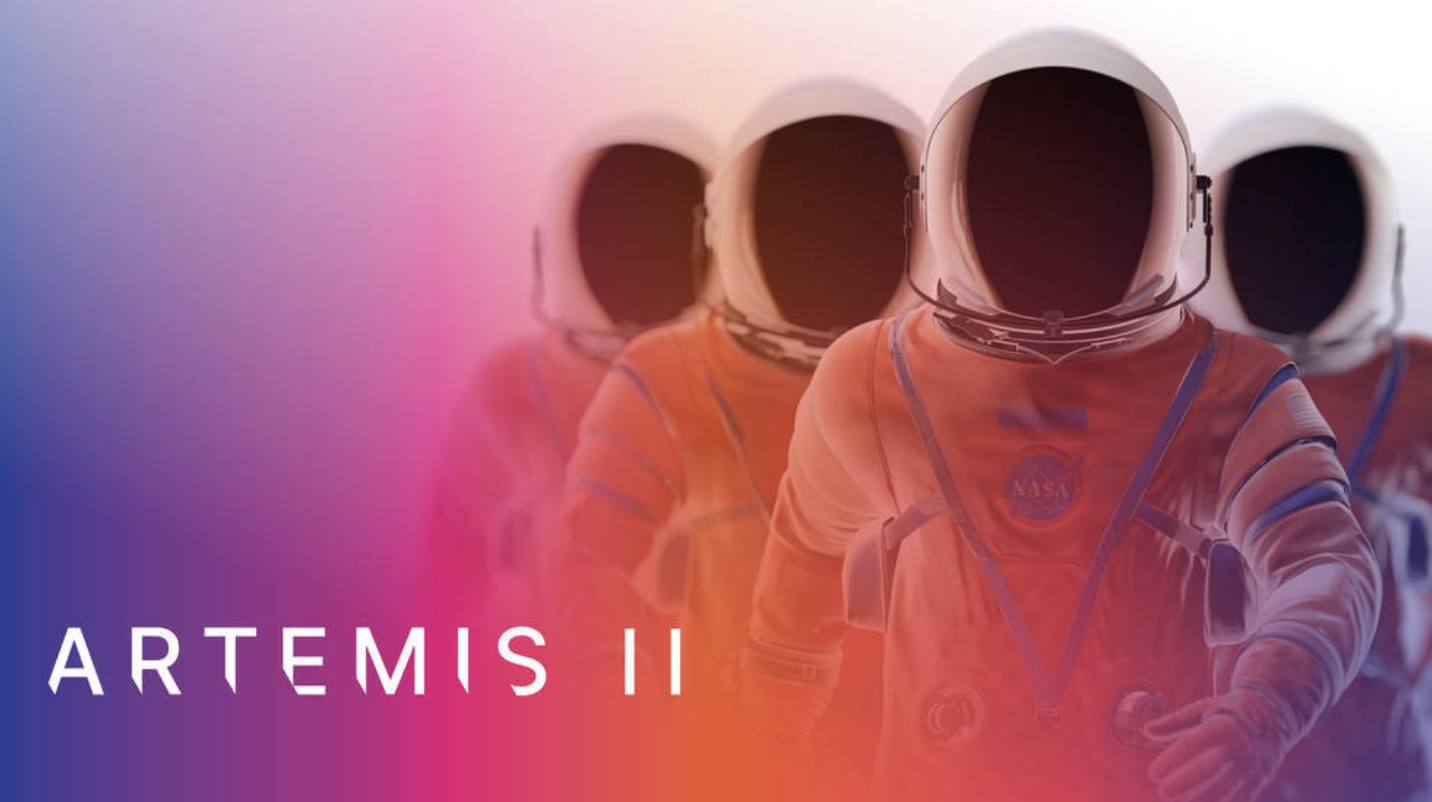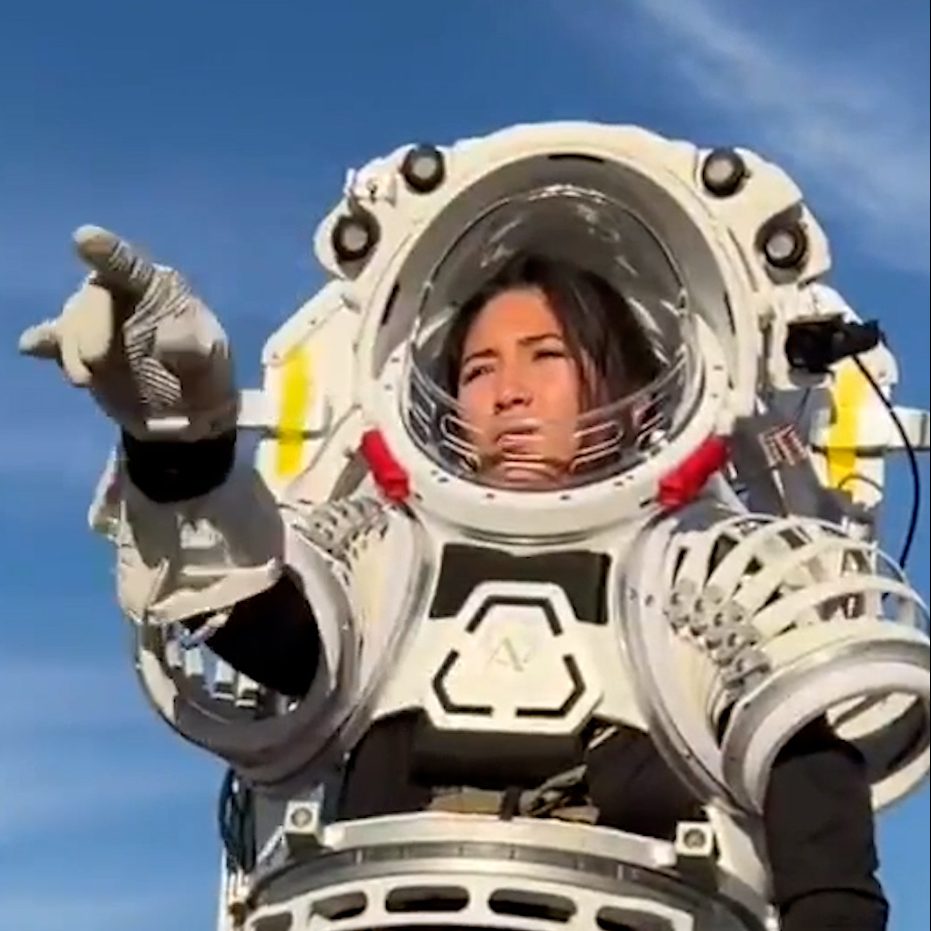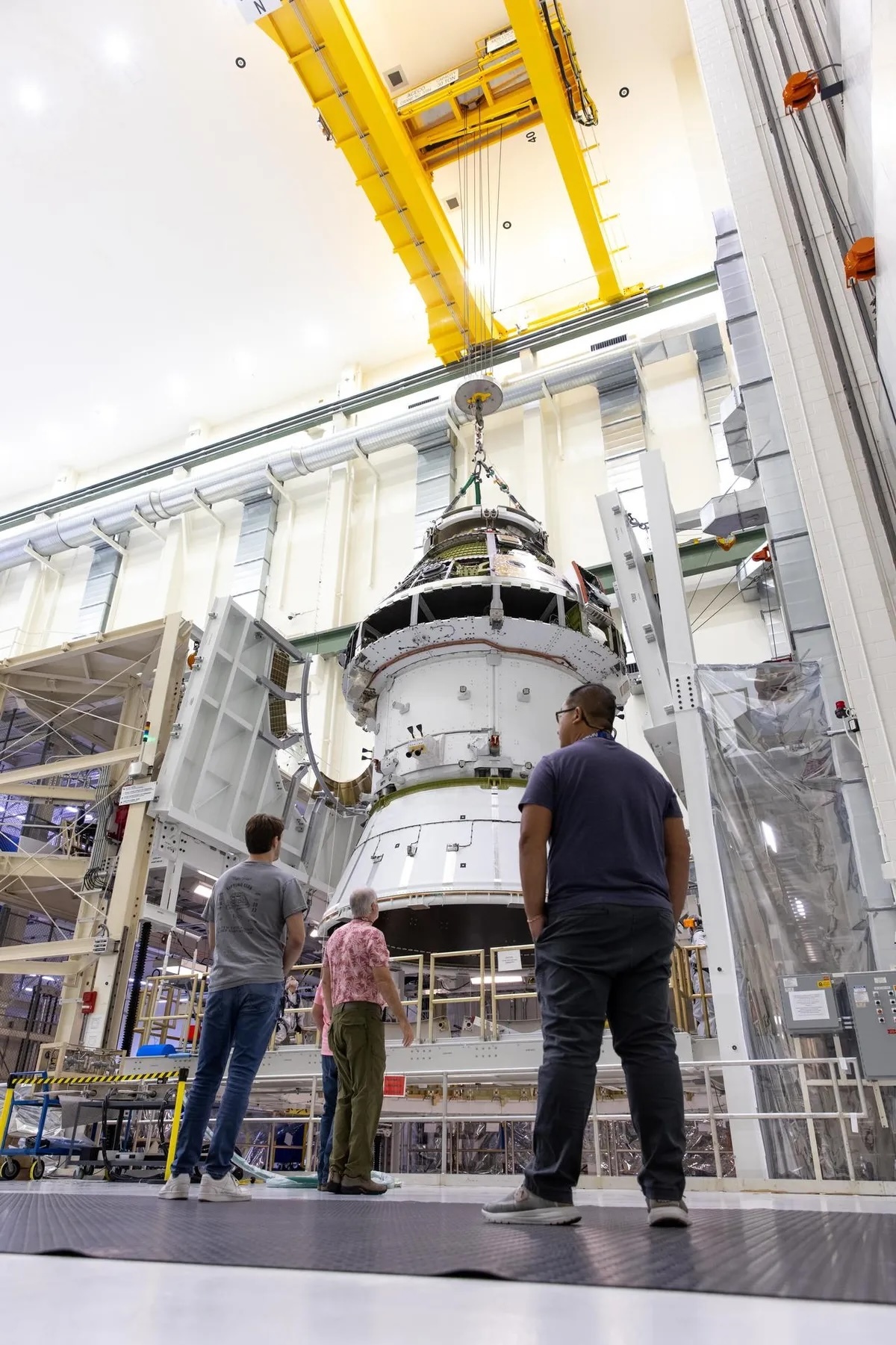15.09.2024

NASA’s Artemis II Crew Uses Iceland Terrain for Lunar Training
Black and gray sediment stretches as far as the eye can see. Boulders sit on top of ground devoid of vegetation. Humans appear almost miniature in scale against a swath of shadowy mountains. At first glance, it seems a perfect scene from an excursion on the Moon’s surface … except the people are in hiking gear, not spacesuits.
Iceland has served as a lunar stand-in for training NASA astronauts since the days of the Apollo missions, and this summer the Artemis II crew took its place in that long history. NASA astronauts Reid Wiseman, Victor Glover, Christina Koch, and CSA (Canadian Space Agency) astronaut Jeremy Hansen, along with their backups, NASA astronaut Andre Douglas and CSA astronaut Jenni Gibbons, joined geology experts for field training on the Nordic island.

“Apollo astronauts said Iceland was one of the most lunar-like training locations that they went to in their training,” said Cindy Evans, Artemis geology training lead at NASA’s Johnson Space Center in Houston. “It has lunar-like planetary processes – in this case, volcanism. It has the landscape; it looks like the Moon. And it has the scale of features astronauts will both be observing and exploring on the Moon.”
Iceland’s geology, like the Moon’s, includes rocks called basalts and breccias. Basalts are dark, fine-grained, iron-rich rocks that form when volcanic magma cools and crystalizes quickly. In Iceland, basalt lavas form from volcanoes and deep fissures. On the Moon, basalts can form from both volcanoes and lava pooling in impact basins. Breccias are angular fragments of rock that are fused together to create new rocks. In Iceland, volcanic breccias are formed from explosive volcanic eruptions and on the Moon, impact breccias are formed from meteoroids impacting the lunar surface.
Apollo astronauts said Iceland was one of the most lunar-like training locations that they went to in their training.

CINDY EVANS
Artemis Geology Training Lead
Along with exploring the geology of Iceland, the astronauts practiced navigation and expeditionary skills to prepare them for living and working together, and gave feedback to instructors, who used this as an opportunity to hone their instruction and identify sites for future Artemis crew training. They also put tools to the test, learning to use hammers, scoops, and chisels to collect rock samples.

“The tools we used during the Apollo missions haven't changed that much for what we're planning for the Artemis missions,” said Trevor Graff, exploration geologist and the hardware and testing lead on the Artemis science team at NASA Johnson. “Traditionally, a geologist goes out with just standard tool sets of things like rock hammers and scoops or shovels to sample the world around them, both on the surface and subsurface.”
The Artemis tools have a bit of a twist from traditional terrestrial geology tools, though. Engineers must take into consideration limited mass availability during launch, how easy it is to use a tool while wearing pressurized gloves, and how to ensure the pristine nature of the lunar samples is preserved for study back on Earth.
There’s really transformational science that we can learn by getting boots back on the Moon, getting samples back, and being able to do field geology with trained astronauts on the surface.

ANGELA GARCIA
Exploration Geologist and Artemis II Science Officer

“There’s really transformational science that we can learn by getting boots back on the Moon, getting samples back, and being able to do field geology with trained astronauts on the surface,” said Angela Garcia, exploration geologist and an Artemis II science officer at NASA Johnson.
The Artemis II test flight will be NASA’s first mission with crew under Artemis and will pave the way to land the first woman, first person of color, and first international partner astronaut on the Moon on future missions. The crew will travel approximately 4,600 miles beyond the far side of the Moon. While the Artemis II astronauts will not land on the surface of the Moon, the geology fundamentals they develop during field training will be critical to meeting the science objectives of their mission.
These objectives include visually studying a list of surface features, such as craters, from orbit. Astronauts will snap photos of the features, and describe their color, reflectivity, and texture — details that can reveal their geologic history.

“Having humans hold the camera during a lunar pass and describe what they’re seeing in language that scientists can understand is a boon for science,” said Kelsey Young, lunar science lead for Artemis II and Artemis II science officer at NASA’s Goddard Space Flight Center in Greenbelt, Maryland. “In large part, that’s what we’re training astronauts to do when we take them to these Moon-like environments on Earth.”
Quelle: NASA
----
Update: 22.10.2024
.
Ground systems could delay Artemis 2 launch

The mobile launch platform that will be used for Artemis 2 was rolled back to the Vehicle Assembly Building Oct. 3 after tests at Launch Complex 39B. Credit: NASA/Jamie Peer
MILAN — Refurbishment of ground systems like a mobile launch platform could become another factor in the schedule for the Artemis 2 mission that NASA says is still planned for launch next September.
A report by the Government Accountability Office Oct. 17 found that work on the Exploration Ground Systems (EGS) program, which includes the mobile launcher and other ground systems needed to support launches of the Space Launch System and Orion spacecraft, could delay the Artemis 2 launch.
“While EGS elements are close to completion, the program has no schedule margin for these remaining activities,” the GAO report stated. While issues with Orion led NASA in January to delay the Artemis 2 launch by nearly a year, to September 2025, that slip provided only three months of schedule margin to EGS. That schedule margin was consumed by June, the report stated, because of issues with testing the mobile launcher at Launch Complex 39B.
“Given the lack of margin, if further issues arise during testing or integration, there will likely be delays to the September 2025 Artemis II launch date,” the GAO concluded.
NASA has been working on both upgrades and repairs to ground systems after the Artemis 1 launch in November 2022. That launch caused more damage to the mobile launcher than expected, requiring repairs as well as the addition of protective barriers to limit damage on future launches. NASA also installed an emergency egress system at the pad while upgrading software and environmental control systems.
The report did not state if work on EGS was on the critical path for Artemis 2. NASA has not provided any recent updates on issues like heat shield erosion seen the Orion spacecraft flown on Artemis 1 to determine if any hardware or operational changes are needed to prevent the issue from reoccurring on Artemis 2.
There is widespread industry skepticism that Artemis 2 will launch as planned next September, but agency leaders continue to state that the mission is on schedule. NASA Administrator Bill Nelson reiterated the September 2025 launch date for Artemis 2 during a talk at the International Astronautical Congress (IAC) here Oct. 14.
“Artemis is doing very well,” he said at a press conference Oct. 15 at IAC. “We are on the schedule to go back to the moon.”
The GAO report warned that any delays in the Artemis 2 launch would correspondingly delay Artemis 3, with the potential for additional delays if the mobile launcher suffered damage on the Artemis 2 launch. There are, though, no major changes to EGS systems planned for Artemis 3.
The report also examined the status of Mobile Launcher 2 (ML-2), the launch platform being built for the SLS Block 1B that will be introduced on the Artemis 4 mission scheduled for launch in September 2028. ML-2 has suffered extensive cost and schedule overruns by prime contractor Bechtel, with the potential for more, a report by NASA’s inspector general warned in August.
The GAO recommended that NASA perform a formal schedule risk analysis to identify issues that could lead to future delays. “With approximately 4 years until Artemis IV and a significant amount of work ahead for Bechtel and EGS, regularly assessing EGS and ML2 schedule risks—including those following Bechtel’s delivery—is critical to understanding if EGS and the ML2 will be ready for the planned Artemis IV launch date,” it concluded.
NASA, in a response included in the report, only partially concurred with that recommendation, saying it did not plan to carry out that specific analysis. The agency said that it will instead use “multiple risk and schedule analysis instruments” to track progress on ML-2. “NASA believes these efforts meet the intent of the GAO recommendation to perform regular schedule analysis.”
Quelle: SN
----
Update: 24.11.2024
.



